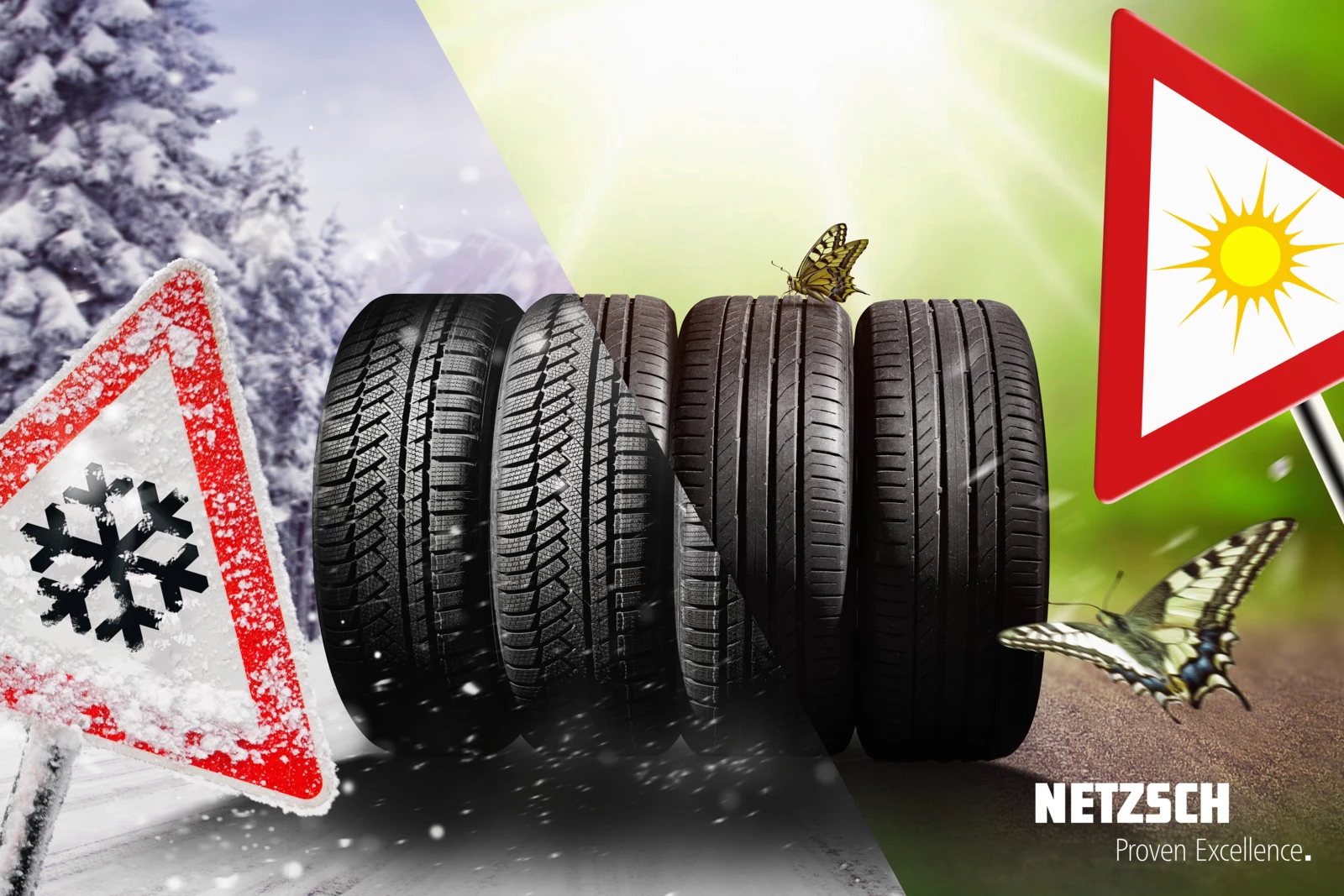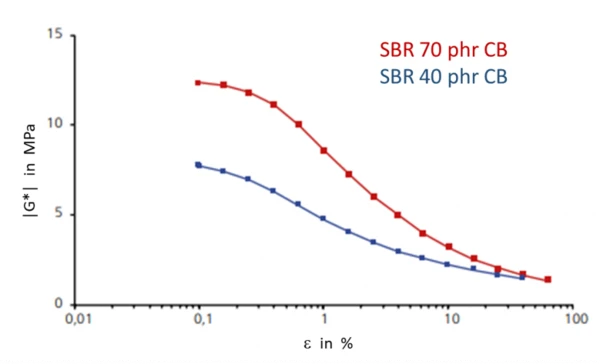
11.10.2021 by Dr. Sahbi Aloui
Winter and Summer Tires or Rather All-Season Tires?
Twice a year it’s time to change tires. But is it really necessary to replace summer tires with winter tires every six months? Isn’t it better to do without the two and use all-season tires instead? We will answer that question for you.
Winter has finally arrived. The semi-annual tire change is due. A second set of tires, a second set of rims, storage costs, and so on – many drivers are annoyed by this time-consuming and expensive routine. But is it really necessary to replace summer tires with winter tires every six months? Isn’t it better to do without the two and use all-season tires instead? What is allowable and what are the main differences between the tire types? NETZSCH has the answer for you.
In Germany it has been forbidden to drive with summer tires under winter conditions since 2010. From a technical point of view, the difference between the tire types lies in the rubber compound and the profile of the tire treads. Winter tires must remain elastic even in the cold and therefore have a relatively soft rubber compound. In addition, the profile ensures a high level of grip on snow and ice. Summer tires must ensure driving and braking stability even under extreme heat. That is why they have a hard rubber compound. In addition, their profile is optimized for aquaplaning (a.k.a. hydroplaning). All-season tires must adapt to the conditions in summer and winter. This can, of course, only be a compromise. Since the all-season tire must meet the legal requirements of a winter tire, it shows its disadvantages especially in summer. The consequences are high wear and tear and longer braking distances. But even in winter, it shows losses in braking distance, grip and cornering behavior.
What do “hard-“ and “soft rubber compound” mean in this context?
Material strength is a mechanical property. It can be easily determined using dynamic-mechanical analysis. For that purpose, the NETZSCH High-Force DMA GABO Eplexor® 500 N is appropriate. It is easy to handle, user-friendly and offers a variety of options along with different test geometries for material characterization and high resolution. The independence of the static and dynamic drives which generate the mechanical load additionally enables versatile use of the High-Force DMA GABO Eplexor® 500 N for static material testing such as tensile tests, creep or RelaxationWhen a constant strain is applied to a rubber compound, the force necessary to maintain that strain is not constant but decreases with time; this behavior is known as stress relaxation. The process responsible for stress relaxation can be physical or chemical, and under normal conditions, both will occur at the same time. relaxation measurements.
To illustrate the hard/soft behavior of rubber materials, we prepared two carbon-black-filled SBR samples (styrene-butadiene rubber) with filler volume fractions of 40 and 70 phr. Phr or parts per hundred rubber denotes in the rubber industry the mass fractions of the individual mixture components in a mixture formulation, based on 100 mass fractions of the base polymer. The SBR samples are designated as SBR 40 CB and SBR 70 CB respectively. Strain sweeps were performed in double shear mode at room temperature and a frequency of 10 Hz. Figure 1 shows the variation of the shear modulus |G*| as a function of the dynamic strain amplitude Ɛ.

Figure 1 shows that increasing the carbon black volume fraction from 40 phr (blue curve) to 70 phr (red curve) leads to high shear moduli |G*|, indicating harder rubber compounds. At 0,1 % dynamic strain, |G*| is 8 MPa for SBR 40 CB und 12,4 MPa for SBR 70 CB. Accordingly, it may be deduced that the SBR 40 CB compound corresponds to winter tire while the SBR 70 CB compound corresponds to summer tire.
The decrease in |G*| with increasing dynamic strain amplitude is explained by the Payne effect, which refers to ContrainteLa Contrainte est définie par un niveau de force appliquée sur un échantillon d’une section bien définie. (Contrainte = force/surface). Les échantillons qui possèdent une section rectangulaire ou circulaire peuvent être comprimés ou étirés. Les matériaux élastiques comme les élastomères peuvent être étirés jusqu’à 5 à 10 fois leur longueur initiale.stress-induced damage of the filler network.
Winter and summer tires… or rather all-season tires? We measured it!
So let´s answer the question “Winter and summer tires or rather all-season tires?”. It can be concluded that all-season tires are out of the question when driving in extreme winter weather such as continuous snow or heavy rain. All-season tires are worth considering for those who drive only in flat country, in cities, or just a few kilometers per year. In contrast, frequent drivers and those who attach great importance to safe driving in winter, as well as to reduced fuel consumption, cannot do without a second set of tires. Please find further information about our DMA GABO Eplexor® series in our brochure.